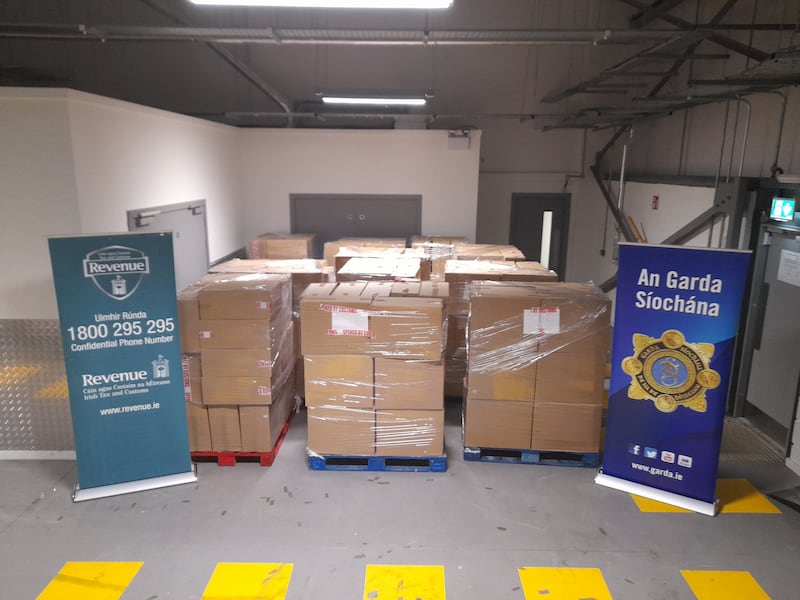What do we know about Budget 2025, due to be presented on October 1st and particularly what will happen on tax?
The initial pitch is that it will involve additional measures amounting to €8.3 billion, though you can bet this will increase on budget day itself. But what about the detail?
You have to read between the lines, but this week’s pre-budget documents drawn up by public servants – the so-called Tax Strategy Group documents – allows us to peep behind the curtain and spot the key decisions and what they will mean. So here is what we know so far.
1. What to do with income tax
There is one vital point here – and it is central to budget costings and what is possible. If the income tax system is not adjusted for inflation, then as wages go up over time you end up paying a slightly higher proportion of your pay in tax.
READ MORE
This is because the real value of tax credits – which work as a cash deduction from your tax bill – are eroded. And as wages rise, more taxpayers are pushed into the higher 40 per cent income tax rate and higher USC and PRSI bands.
In the post austerity years, non-indexation of the system pushed up the income tax burden. More recently, annual increases in credits and banks have just about kept pace with wage inflation. The Tax Strategy Group papers have a good illustration. Tax credits and the rate at which people enter the higher tax rate have increased since 2021, as well as USC cuts.
New revenue will always be raised in the budget, but options are limited.
Taking average PAYE earnings of around €44,900 in 2021 and €50,090 in 2024, the figures show that the amount of gross income which the employee keeps – their take-home pay after tax – has increased only slightly from 76.1 per cent of salary in 2021 to 77.6 per cent this year.
So the first and central key message in the tax package for this year’s budget is the cost of adjusting tax credits and the standard rate band fully for 4.5 per cent expected wage inflation – the cost of standing still – would use up the vast bulk of the money allocated in the tax package, €1.125 billion out of a total of €1.4 billion.
There are three possible strategies here for Minister for Finance Jack Chambers. The first is to fully index the system and accept there is not much more leeway. The second is to lowball the indexation a bit and leave more cash for elsewhere.
The third is to find somewhere else to raise some cash – remember that the €1.4 billion is a net figure – and so if he can find more revenue elsewhere, Chambers has more scope to use it for more cuts. But finding anything significant is not easy.
The rest of the budget tax package will turn on what happens here.
2. Where can money be raised?
New revenue will always be raised in the budget, but options are limited. Perhaps the most significant additional cash will come from the rise in carbon tax – around €143 million unless the planned trajectory of annual increases is changed.
Elsewhere pickings could be slim enough. The bank levy was hiked last year – with the tax more than doubled to €200 million per annum – and the Government can hardly go back to this well for much more.

The scope for increases in the “old reliables” – notably tobacco – is also limited. In recent years the Revenue Commissioners have been warning the Government that higher tax is driving people to import more cigarettes when they are abroad and also buy more illegal packs – together these two sources now account for over one-third of all packs sold.
A 75 cent increase in the cost of a pack of 20 cigarettes in the last budget was targeted to raise just €67 million in additional revenue.
And while there will be money raised, there are also specific issues which may reduce the tax take. Let’s take a look at these.
3. What other tax concessions will there be for households?
Outside of the well-signalled income tax concessions, what more can be done to help households on the tax front?
One of the trickiest calls will be whether to extend the VAT reduction on electricity and gas bills from 13.5 per cent to 9 per cent introduced initially in mid 2022 and extended in the subsequent two budgets. It is due to run out at the end of this year.
A further extension for 2025 would cost a hefty €319 million, according to the Tax Strategy papers, but there will be pressure to do so, particularly as the excise cuts on fuel introduced during the crisis are being reversed and higher carbon tax will push up fuel prices too.
In other potentially costly decisions, extending the one-year mortgage interest relief introduced last year would cost about €125 million – this one looks less likely, with interest rates on a declining trend, albeit slowly. But you never know!

‘With airlines there’s always some volatility'
There are some other interesting possibilities. Following comments by some Fine Gael backbenchers, both Taoiseach Simon Harris and Tánaiste Micheál Martin have hinted at some inheritance tax concessions.
The argument is that house prices have increased, making the thresholds at which the tax kicks in lower in real terms. The Tax Strategy Group plays a straight bat here, merely outlining the revenue lost or gained from various increases or cuts in the tax and not expressing any opinion. Every one point reduction in the 33 per cent rate would cost the exchequer €20 million.
Increasing the €335,000 tax-free threshold which applies to children inheriting from parents to €400,000 would cost €52 million. As these sums are not large in the overall budgetary context – inheritance tax raises less than 1 per cent of all tax revenue – it would be no surprise to see a change, possibly via an increase in the exemption limits.
Further increase in the renters’ tax credit may also be on the cards, as the Coalition tries to appeal to a variety of constituencies in advance of the general election.
Another group which could be aimed at is the higher income self-employed, with the tax papers pointing out that the Programme for Government promised to do away with a 3 per cent USC surcharge on self-employed (non-PAYE) incomes over €100,000 – bringing the overall marginal tax rate for this group to 55 per cent.
Doing this would cost €81 million. Specific tax credits – such as those for home carers – could also be further increased.

4. What supports will there be for businesses?
The Tax Strategy Papers go through a range of business support schemes and reliefs and the usual tweaks can be expected here. However what about the big ticket items?
The most significant is demands from the hospitality sector for a return of the 9 per cent VAT rate. In unusually forthright language, the authors of the Tax Strategy Papers say this “remains unjustified”, arguing that the domestic economy is doing okay and employment in the sector is holding up.
However the key argument is the cost, which would on official estimates be €764 million in 2025, and would even be close to €550 million if only food and catering were included.
The Department of Finance always hated the lower rate – fearing a permanent loss of revenue – and also argues that a reduction in VAT on new house building would be very costly and hard to administer.
The dilemma for Chambers is that reintroducing the 9 per cent rate for hospitality would use up roughly half of all the net room for manoeuvre on taxes, effectively requiring him to go easy on cuts elsewhere or raise significant new revenue.
The scope for major tax concessions before the general election is limited enough.
An alternative might be to look at the Ibec suggestion of a temporary employers’ PRSI rebate for lower wage workers, which the lobby group costs at €300 million in 2025 but could cost less depending on its scope. This would put cash straight back into the pockets of business owners.
5. Will pre-election help be given elsewhere to voters?
The scope for big tax concessions before the general election is limited enough, particularly after income tax indexation – or even partial indexation is counted in.
As well as a generous welfare package, will this tempt the Coalition to direct more cash to households via a repetition of some “once-off” measures, such as double child benefit weeks, or a last round of energy credits? Technically, if any concessions were paid out in 2023 it would reduce the budget surplus for this year, but have no impact on 2024. Ministers may not be able to resist.















